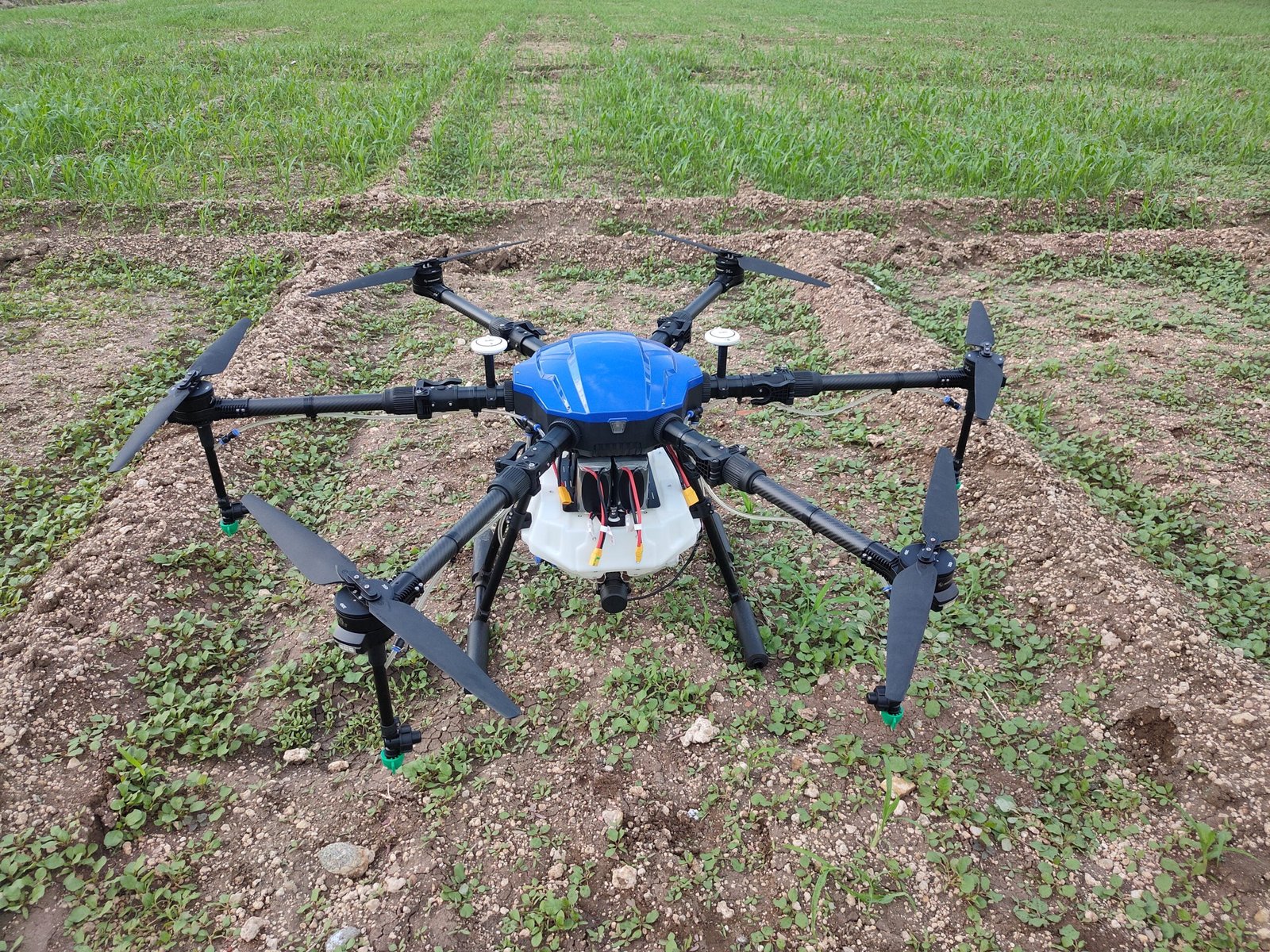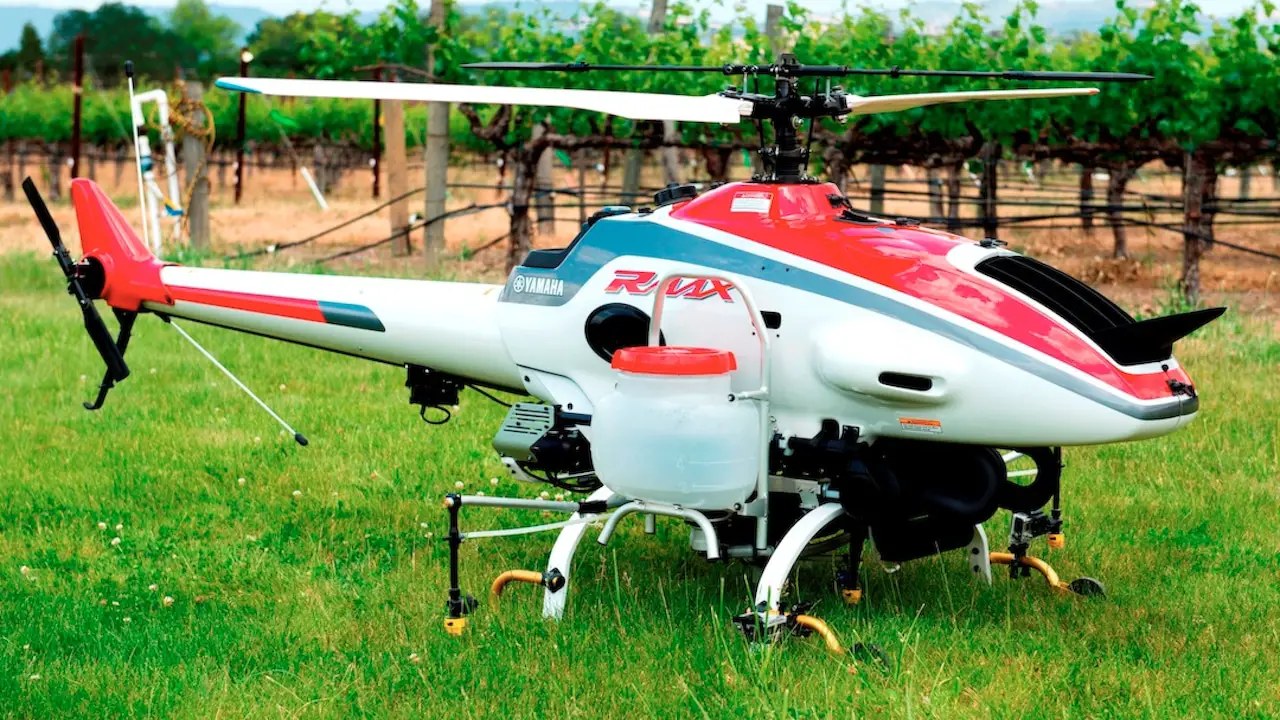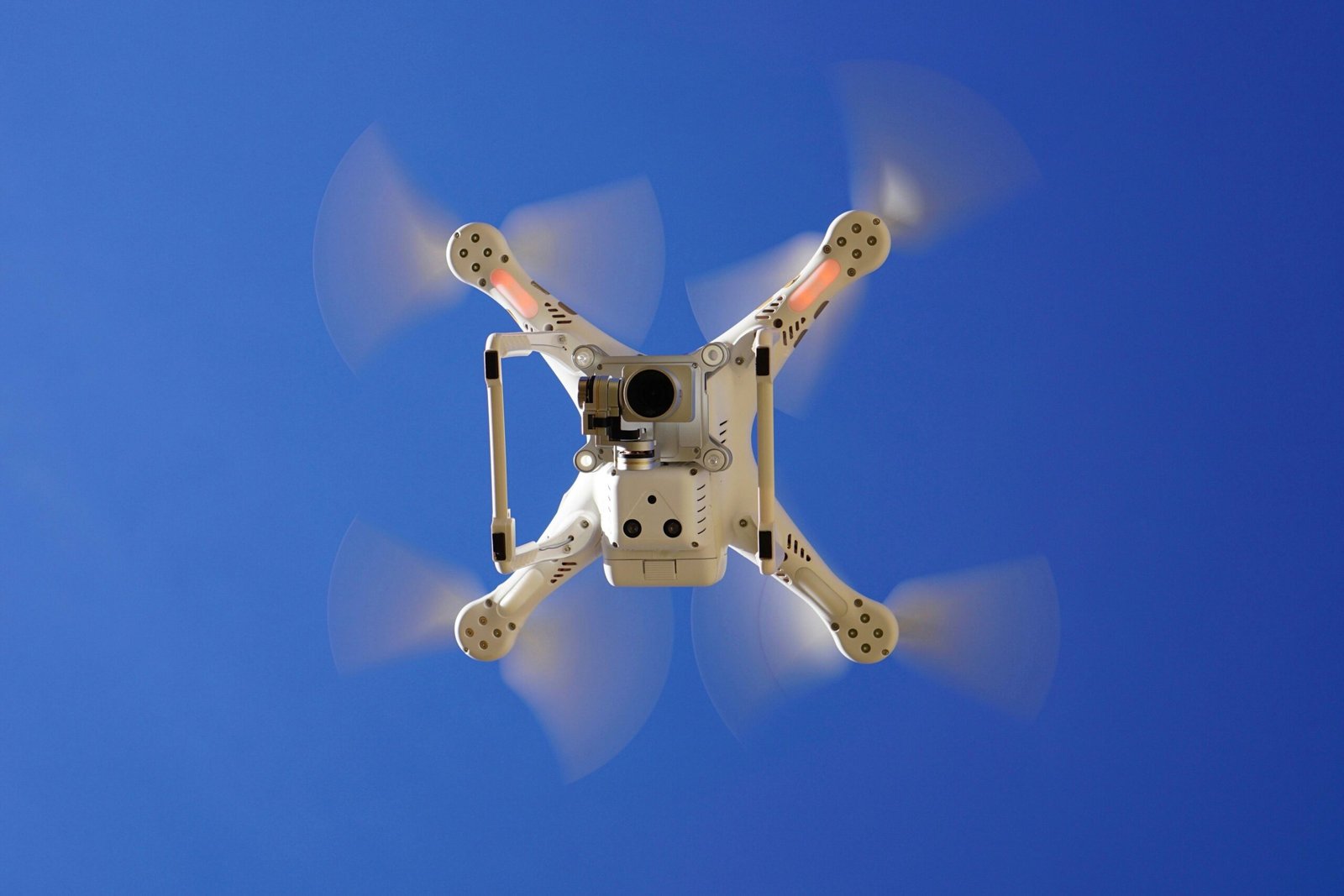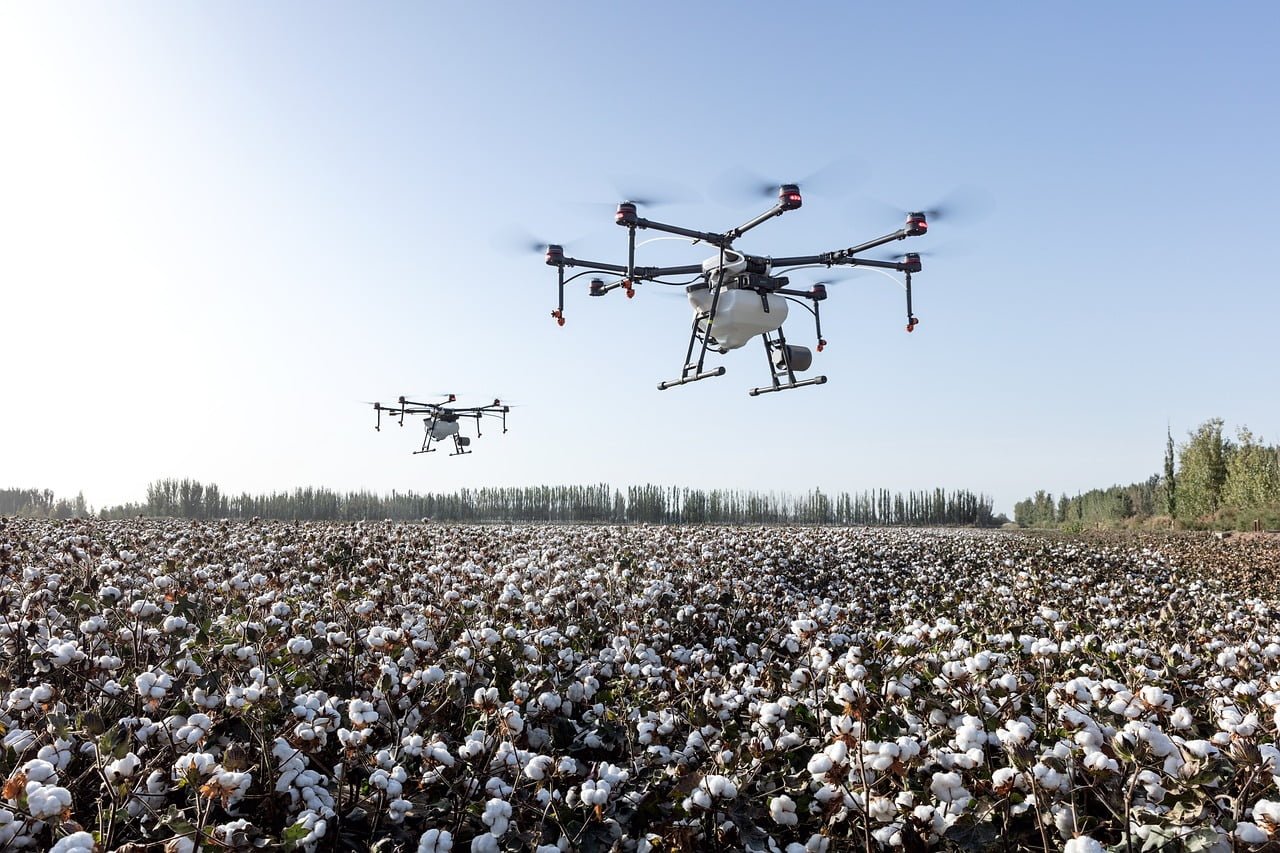
Summary of Contents
Introduction
Agriculture has seen tremendous technological advancements over the centuries, but none has been more groundbreaking than the rise of agricultural drones. These unmanned aerial vehicles (UAVs) have ushered in a new era of precision farming, offering farmers real-time data and efficient methods to manage crops. As someone who has been practicing organic farming for over a decade, I can personally vouch for how technology—especially drones—has transformed farming into a more manageable and profitable practice.
Agricultural drones aren’t just a tool for large commercial farms. They are becoming increasingly accessible for small and medium-sized farmers as well. Their ability to map fields, monitor crops, and spray pesticides or fertilizers with precision is reshaping the landscape of traditional farming methods. Notably, drones are making significant headway in regions like Northeast India, where traditional farming methods still dominate.
In this article, we’ll dive into the world of agricultural drones, exploring their history, benefits, comparison with traditional methods, and their unique role in organic farming. We’ll also look at their impact in Northeast India, a region emerging as a hotspot for sustainable agriculture.
History of Agricultural Drones
The use of drones for agricultural purposes is a relatively recent development, but the concept of using aerial vehicles for observation and data collection dates back centuries
What Are Agricultural Drones?
Agricultural drones are unmanned aerial vehicles specifically designed to help farmers with various tasks on their farms. These tasks include monitoring crop health, spraying pesticides or fertilizers, and even planting seeds. Drones equipped with cameras, sensors, and GPS systems provide farmers with real-time data about their fields, making it easier to monitor large areas in a short amount of time.
In my own organic farming practice, drones have become an essential tool for understanding the health of my crops without spending hours walking through the fields. I can quickly assess areas that need attention, and because the drones are so precise, I don’t waste resources on unnecessary interventions.
When Were Drones First Used in Agriculture?
Drones, or UAVs, have come a long way since their initial use in military operations. The application of drones in agriculture began in the early 1980s in Japan when Yamaha introduced the RMAX drone, a helicopter-like UAV that was used for crop spraying. Initially, drones were primarily used for pest control and spraying fertilizers in rice fields, but as the technology developed, they became more widely adopted for various agricultural purposes across the globe.
Who Invented Drones in Agriculture?
Although drones were originally designed for military use, their adaptation for agriculture can be credited to engineers and agricultural experts who saw the potential for UAVs to revolutionize farming. One of the earliest contributors was Yamaha’s RMAX project in Japan, which laid the foundation for drones in crop management. While no single person can be credited with “inventing” agricultural drones, it was this initiative that first brought drone technology to farming.
Over the years, the technology improved, and the use of agricultural drones expanded globally. By the mid-2010s, drones had become widely available to farmers of all scales, from large commercial farms to small organic setups in regions like Northeast India. With advances in GPS, high-resolution cameras, and sensor technology, drones can now provide a comprehensive overview of farm operations, transforming agricultural management.

How Agricultural Drones Work?
Agricultural drones combine advanced technology with practical farming needs, offering a range of tools to monitor and improve farm operations. Here’s a closer look at how these drones work:
Remote Operation
Drones in agriculture are controlled remotely, either through handheld devices or computers. Using GPS and flight planning software, farmers can set specific routes for drones to follow, ensuring full coverage of their fields. This makes it easy to monitor crops, spray fertilizers, or assess field conditions without having to physically be in the field.
Sensors and Cameras
One of the most important components of agricultural drones is the sensors and cameras they carry. These devices allow drones to capture high-resolution images, thermal data, and multispectral information, which helps detect crop health issues like nutrient deficiencies, pest infestations, or water stress. Sensors can measure everything from soil moisture levels to crop growth patterns.
Data Analysis and Processing
After gathering data, drones process this information using software that turns raw data into actionable insights. Farmers can view maps of their fields, identify problem areas, and plan targeted interventions. Data analysis from drones helps farmers make better decisions about when to water, fertilize, or harvest crops.
How Do Drones Help in Agriculture?
Drones help in agriculture by offering precision, efficiency, and real-time data. Here’s a breakdown of how they are transforming farming:
- Crop Monitoring: Drones equipped with multispectral sensors can detect subtle changes in crop health, soil moisture, and even nutrient levels. This allows farmers to address issues before they become serious problems.
- Field Mapping: Using GPS technology, drones can create detailed maps of fields. These maps help in identifying areas that may need more water or nutrients, helping farmers optimize the use of resources.
- Fertilizer and Pesticide Application: Some drones are designed to spray fertilizers and pesticides with incredible precision, ensuring that only the necessary areas are treated. This reduces waste and limits the environmental impact of chemicals.
- Seed Planting: In some cases, drones can even plant seeds directly into the soil, reducing the need for manual labor in remote or hard-to-reach areas.
In Northeast India, where agriculture is often conducted on difficult terrain, drones are especially beneficial. Farmers in states like Sikkim and Assam are beginning to use drones to monitor tea plantations, rice paddies, and organic farms spread across the hilly landscape. The ability to fly over these areas and collect data makes drones an invaluable tool for these farmers.
Benefits of Agricultural Drones
Why Use Drones in Agriculture?
The use of drones in agriculture offers a wide range of benefits, making farming more efficient, precise, and environmentally friendly. Here are some of the top reasons why farmers should consider using drones:
- Time Efficiency: One of the most significant advantages of drones is the time they save. Traditionally, farmers had to spend days walking their fields to check for issues. With drones, this can be done in a matter of hours.
- Cost Savings: By detecting issues early and precisely applying fertilizers or pesticides, drones can reduce the cost of these inputs. Farmers only need to treat the areas that need it, instead of blanket-spraying the entire field.
- Environmental Sustainability: For organic farmers like myself, minimizing the use of chemicals is crucial. Drones help by ensuring that pesticides and fertilizers are applied with precision, reducing their impact on the environment. This is particularly important in regions like Northeast India, where organic farming is on the rise.
- Better Decision-Making: The data gathered by drones—whether it’s about soil moisture, crop health, or field mapping—provides farmers with the information they need to make better, more informed decisions about their crops.
- Increased Productivity: Drones can help boost productivity by identifying areas that need attention before they become major problems. Early detection of crop diseases or pest infestations can save entire harvests.
Personally, I’ve experienced a significant boost in both productivity and sustainability on my farm. Before using drones, I had to rely on manual labor to assess crop health, which took time and often missed hidden issues. Drones now give me a bird’s-eye view of my farm, allowing me to manage it more effectively.

Comparison with Traditional Farming Methods
Traditional farming methods involve a lot of manual labor, which can be both time-consuming and prone to errors. Before drones were introduced, farmers had to physically walk their fields to inspect crops, measure water levels, and apply fertilizers or pesticides evenly.
Traditional Farming Challenges
- Time-Consuming: Farmers had to spend long hours walking through their fields to check for signs of disease, pest infestations, or soil health issues.
- Inconsistent Application: Applying fertilizers, pesticides, or water manually often led to over-application in some areas and under-application in others, leading to waste and inefficiency.
- Labor-Intensive: Traditional methods rely heavily on manual labor, which can be costly and exhausting, especially on larger farms or in difficult terrains like those found in Northeast India.
Drones vs. Traditional Methods
With drones, many of these challenges are significantly reduced. Drones allow farmers to monitor their crops from above, using cameras and sensors to detect issues that would otherwise go unnoticed. Unlike manual inspections, drones provide real-time data, giving farmers the ability to act quickly. Additionally, drones can spray pesticides or fertilizers with much greater precision than traditional methods, reducing waste and environmental impact.
| Aspect | Traditional Methods | Drones |
|---|---|---|
| Time Required | High | Low |
| Labor Costs | High | Low |
| Data Accuracy | Moderate | High |
| Overall Efficiency | Low | High |
For farmers in Northeast India, where terrain can be rugged and farms are often spread out over large areas, drones are an especially valuable tool. Using drones reduces the need for manual labor and helps farmers manage their fields more efficiently.
Agricultural Drones’ Role in Organic Farming
In organic farming, where the goal is to minimize chemical inputs and maximize sustainability, drones play a crucial role in achieving these goals. As an organic farmer myself, I’ve seen firsthand how drones can enhance organic practices.
Precision in Chemical-Free Farming
One of the biggest challenges in organic farming is maintaining crop health without the use of synthetic pesticides or fertilizers. Drones help by providing accurate data on soil conditions, moisture levels, and crop health, allowing organic farmers to make informed decisions about when and where to intervene.
For example, drones can identify areas of a field that are under stress due to lack of water or nutrient deficiencies. By pinpointing these areas, organic farmers can take targeted action, such as applying compost or using organic pest control methods, without impacting the rest of the field.
Natural Pest Control
Organic farming often relies on natural methods of pest control, such as introducing beneficial insects or using natural repellents. Drones can assist in this process by identifying pest infestations early, allowing farmers to release predators or apply organic treatments only where needed.
In my own organic farming practice, I’ve found that drones help reduce the need for any widespread application of treatments. Instead, I can target problem areas, saving time and preserving the integrity of the surrounding environment.
Sustainability and Resource Management
Organic farming places a heavy emphasis on sustainability, and drones help farmers achieve this by improving water management and reducing waste. Drones equipped with sensors can monitor soil moisture levels, ensuring that water is used efficiently and that crops are irrigated only when necessary. This not only conserves water but also prevents over-irrigation, which can lead to soil erosion and nutrient leaching.
In Northeast India, where water conservation is critical, drones are becoming an essential tool for organic farmers looking to manage their resources responsibly.

Challenges of Agricultural Drones
While drones have brought numerous benefits to agriculture, there are several challenges and considerations farmers need to keep in mind.
Regulations and Permits
Operating drones in agriculture is not without its legal hurdles. In many countries, including India, drone usage is regulated by aviation authorities, and farmers must obtain permits to operate drones commercially. In India, the Directorate General of Civil Aviation (DGCA) regulates drone operations. Farmers must ensure they comply with these regulations to avoid fines or legal issues.
Battery Life and Range
One of the limitations of agricultural drones is their battery life and range. Most drones can only fly for 20-30 minutes before needing to be recharged, limiting how much ground they can cover in a single flight. For larger farms, this may require multiple flights or more expensive drones with longer battery life.
Data Security
With drones capturing and transmitting large amounts of data, data security is a growing concern. Farmers must ensure that the data collected by drones is stored securely and not susceptible to hacking or unauthorized access. For farmers working with sensitive information, investing in secure data management systems is essential.
Impact of Drones in Northeast India
Northeast India is an emerging hub for organic farming, thanks to its rich natural resources, biodiversity, and minimal use of synthetic chemicals in traditional farming. The region’s difficult terrain and small-scale farms, however, pose challenges that can be addressed by the use of drones.
Overcoming Terrain Challenges
The hilly terrain and remote locations of many farms in Northeast India make it difficult for farmers to monitor and manage their crops using traditional methods. Drones provide an efficient solution by allowing farmers to survey large areas quickly and efficiently, regardless of the terrain.
Supporting Organic Farming in the Region
Northeast India is a key player in India’s organic farming movement, with states like Sikkim leading the way as the country’s first fully organic state. Drones are helping farmers in this region maintain their organic practices by providing real-time data on crop health, soil conditions, and pest infestations, all without the need for chemical interventions.
Boosting Productivity and Sustainability
Farmers in Arunachal, Assam, and Manipur are beginning to adopt drone technology to monitor tea plantations, rice paddies, and spice farms. By improving resource management and reducing the need for manual labor, drones are helping to increase productivity while maintaining the region’s commitment to sustainability.
From my perspective as an organic farmer, drones are revolutionizing the way we manage farms in Northeast India. They allow us to uphold the principles of organic farming while boosting efficiency and productivity.

Conclusion
Agricultural drones have completely transformed the way we approach farming. From improving crop monitoring to making organic practices more sustainable, drones are proving to be an indispensable tool for farmers around the world, including those in Northeast India.
For farmers who want to stay competitive and ensure the health of their crops without sacrificing sustainability, agricultural drones are the way forward. Whether you’re farming on steep terrain in the hills of Northeast India or managing vast fields, drones can help you work smarter, not harder.
Ready to explore how agricultural drones can revolutionize your farming practices? Dive deeper into the benefits of drone technology and learn how it can enhance both traditional and organic farming.
FAQ Section
When were drones first used in agriculture?
Drones were first used in agriculture in the early 1980s, starting in Japan with Yamaha’s RMAX drone, which was used for spraying crops.
What are drones in agriculture?
Agricultural drones are unmanned aerial vehicles (UAVs) equipped with cameras and sensors to help farmers monitor crop health, map fields, spray pesticides or fertilizers, and even plant seeds.
How do drones help in agriculture?
Drones help by providing real-time data on crop health, soil conditions, and pest infestations. They also allow for precise application of fertilizers and pesticides, improving efficiency and reducing waste.
Why use drones in agriculture?
Drones increase productivity, save time, reduce costs, and minimize the environmental impact of farming by offering precision in crop management.
Who invented drones in agriculture?
The adaptation of drones for agriculture began with Yamaha’s RMAX project in Japan in the 1980s. While no single person is credited, it was a collective innovation by engineers and agricultural experts.
What are Kisan drones?
Kisan drones are unmanned aerial vehicles (UAVs) specifically designed for agricultural applications in India. These drones are equipped with various sensors, cameras, and other technologies that enable them to collect data and perform tasks related to farming and crop management
